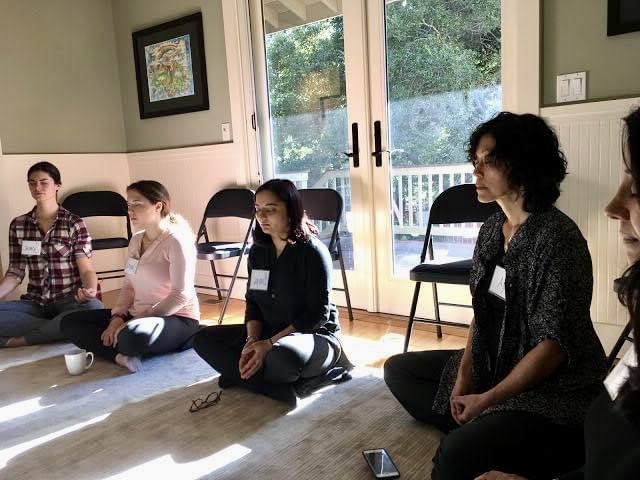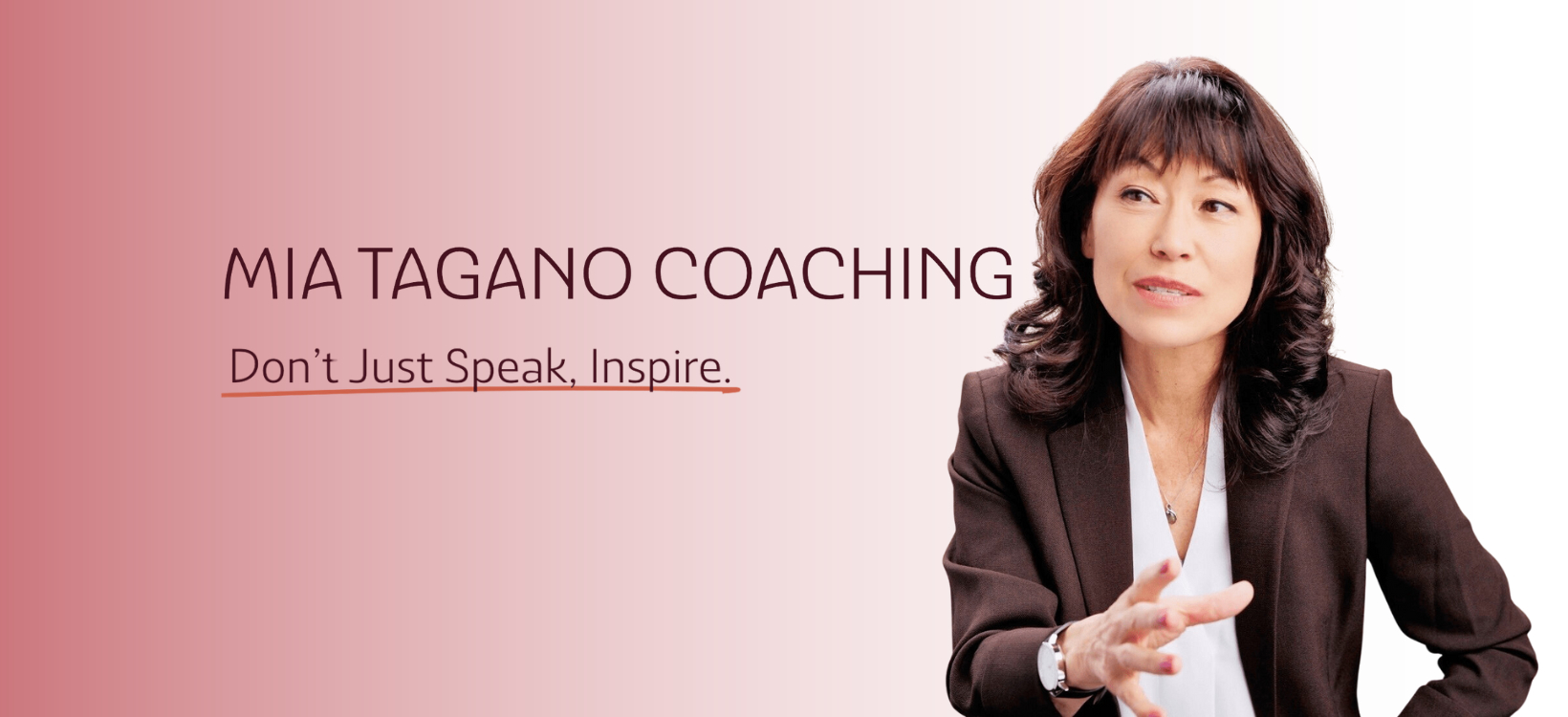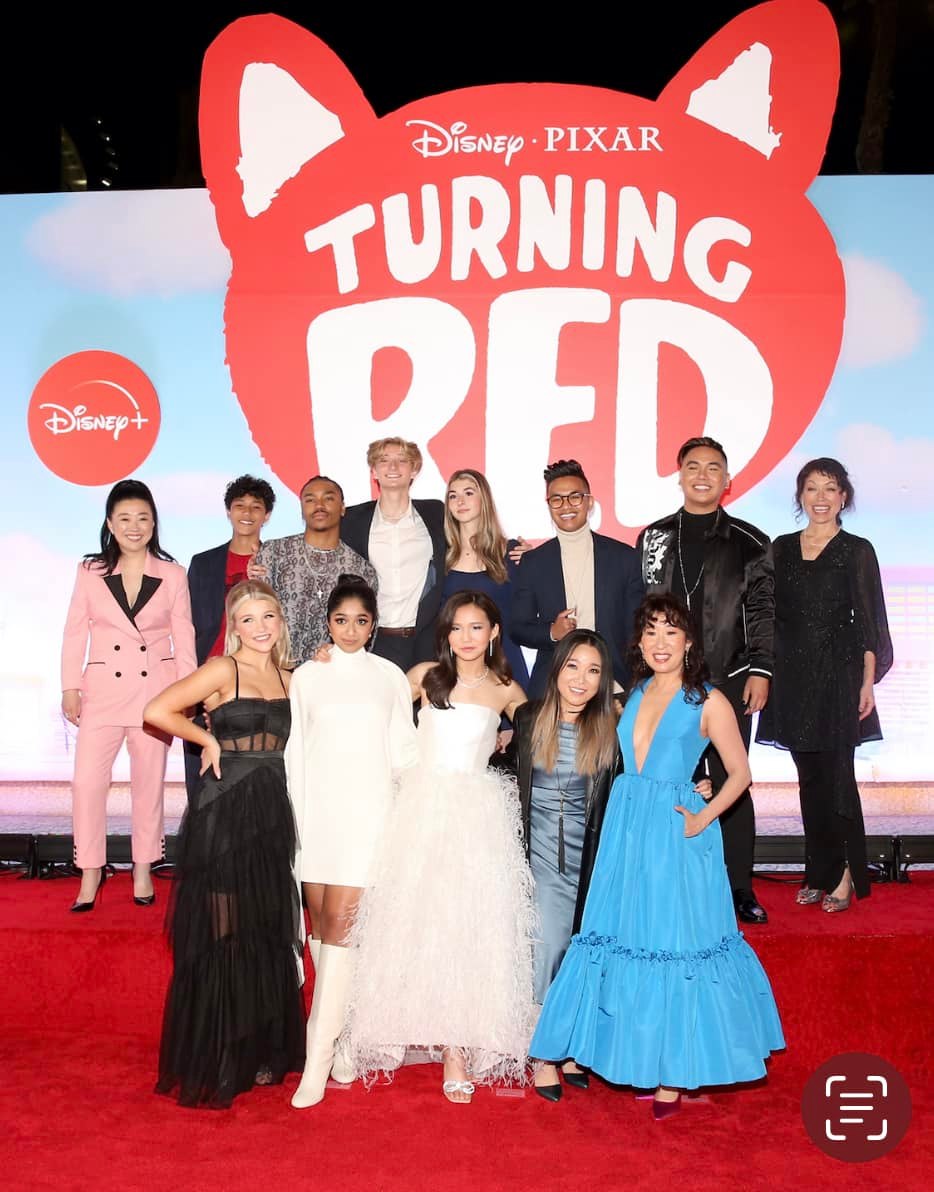We recently connected with Mia Tagano and have shared our conversation below.
Mia, appreciate you joining us today. Can you share a story about the kindest thing someone has done for you and why it mattered so much or was so meaningful to you?
Years ago, my partner John and I were invited to attend a gathering in India – a global conversation on Gandhi’s values in the modern world. At the time, the cost felt out of reach. But then, an anonymous donor quietly gifted us the trip. We said yes, not knowing it would become one of the most transformational experiences of our lives.
While in India, we visited a leprosy community. There I met a woman who made six purses a day for the equivalent of three dollars – perhaps less. Each evening, she cooked for and hand-fed 60 elders, most of whom had lost their fingers and could no longer feed themselves. She did this not because anyone asked her to, but because she could. Her daily acts of care were deeply human, and deeply sacred.
In another village, where there were no toilets, no running water, no modern infrastructure, there was still an abundance of joy. The day we visited, a festival was underway. Our host knew I was an actor and teaching artist and asked me to follow him. Without much explanation, he took me toward a stage and then announced my name to the crowd. Suddenly, I was being asked to perform.
Just before this, a group of young women had danced. I invited them back up. Remembering some of their movements, I mirrored them, and together we beckoned the children in the front row to join us. It turned into a spontaneous game of mirror – no words, just movement. Just joy. We cheered – not for me, but for each other.
Later, during a car ride, we were stopped at a light when a woman came to the window begging. Her eyes were listless. Our host looked at her, called her “sister,” and offered a blessing. And in that moment, something shifted. Her eyes lifted. For a moment, they were simply two people – fully present with one another.
Another man we met had no legs and used a scooter to get around. He delivered food to elders because he wanted to be useful. He arranged our shoes at the door of the center without being asked. I still remember him, happily crossing the grass on the knuckles of his hands. He was one of the most joyful people I’ve ever met.
I came home with a new understanding of dignity, presence, and service. Not long after, my grandmother was placed in a nursing home. I had already left New York in 2003 and my full-time acting career to help care for her. She lived until 99 and passed in 2019. The last five years of her life were spent in the memory care unit of that home, and I visited her weekly – sometimes as often as four times a week.
What I found there shocked me. She was immediately put into diapers and a wheelchair – neither of which she needed. The facility was understaffed. The workers were overworked and underpaid. And many of the elders never had visitors.
I couldn’t unsee what I had seen in India – the joy, the reverence, the sacredness of elder care. I couldn’t turn away.
So I showed up like those I had met in India. I advocated, not only for my grandmother, but for others. When it was especially hard, I remembered the people I had met, and I led with compassion instead of frustration. I used my voice differently – more intentionally, more bravely. I walked my talk. I did my best to pay forward the gift I’d been given.
That anonymous donor didn’t just send us on a trip. They gave me a way of being.
That time didn’t advance my career, and it certainly didn’t fit the traditional path of success. But it changed how I move through the world. It changed the way I coach, the way I speak, the way I see. Whether I’m guiding someone through a big talk, helping them reconnect with their voice, or simply seeing beyond their discomfort to their beauty – much is shaped by that gift.
Sometimes the kindest thing someone can do is open a door to a deeper way of seeing. It’s the kind of gift that keeps reshaping everything long after it’s given.


As always, we appreciate you sharing your insights and we’ve got a few more questions for you, but before we get to all of that can you take a minute to introduce yourself and give our readers some of your back background and context?
1. Can you please tell our readers about yourself?
I’m a partner, friend, daughter, sister, actor and a voice and leadership coach who helps people find their authentic voice and reveal their true selves.
2. How did you get into your industry/business/discipline/craft?
I’ve wanted to be an actor since the second grade though, at the time, I didn’t fully understand what that meant. I didn’t see my first professional play until I was a junior in high school, when a friend invited me to A Chorus Line (or maybe it was Annie?). You’d think musicals would’ve become my thing, but it was the deeper, more grounded storytelling that really spoke to me.
The path wasn’t linear. In undergrad, I got academically dismissed. I’d been kicked out of my home, commuting long hours between cities, barely holding it together. After getting dismissed, I found work, regrouped, and submitted a petition to get back into school.
I asked for a meeting with the dean. He listened and asked me one simple question: “What do you love to do?” I told him I loved acting, that I’d been performing with a community theatre group. He said, “Then that’s what you need to follow.” That moment changed everything.
As I returned to school and deepened my connection to theatre, I also began thinking about graduate programs.
So after much research, I auditioned for only two MFA programs that felt right to me: NYU and the University of Washington. I got a callback for NYU and flew to New York for the weekend audition. During the interview, they asked how I planned to pay for the program. I naively said, “I could get a side job.” The room got quiet. I didn’t get in.
But I did get into the University of Washington, and honestly, I think that’s exactly where I was meant to be. Their professional actor training program was rigorous and soulful. It wasn’t just about the business of acting which in hindsight was both a limitation and a gift. I had some truly extraordinary teachers who shaped me in ways I still carry.
At the end of the program, we did showcases for agents and casting directors. One agent in NYC kept in touch with me after – checked in, supported me, and eventually invited me to sign. I still remember going into their office. The whole team, including the office dog, was there. It was kind of known: if the dog didn’t like you, you probably weren’t getting signed. Thankfully, the dog liked me.
My first job was at Lincoln Center, performing in Far East – over 200 shows, all with my face covered (I played a Japanese stage hand or Kuroko). That experience taught me about humility, about presence, and about showing up fully even when you’re not the one being seen.
A highlight of my career was after 8 auditions getting cast in the 10 hour play TANTALUS by John Barton co-founder of the Royal Shakespeare Company…It took John 17 years to write and was originally 17 hours long when we started the 9month rehearsal process in Denver, CO, March 2000 — it was directed by Sir Peter Hall and his son Edward. The show opened in Denver at the Denver Center for the Performing Arts then toured England and ended at the Barbican in London.
I lived in Brixton, London until my visa and money ran out then came back to NY Sept 2001, 2 weeks after 9-11.
In 2003, I left NY to help take care of my grandmother who had dementia – I helped for 16 years. She passed in 2019.
9 years ago I began my voice coaching business — since then I have worked with over 250 individuals. I’ve been a teaching artist over 20 years as well – working with folks from ages 3 to 80. More recently I taught adults in a variety of acting classes at the American Conservatory theatre and Berkeley Repertory theatre. I also spent 2 years doing scratch recordings at Pixar for their film Turning Red and was ultimately offered the role of Aunt Lily. And, I continue to act on stage as well. Every thing I do and have done influences and informs my work particularly my coaching and teaching.
3. What type of products, services, or creative works do you provide?
I offer one-on-one coaching, group trainings, and customized workshops for individuals, organizations, and events. My work is not cookie-cutter – it’s relational, intuitive, and designed to meet people exactly where they are.
Here’s what that can look like:
– Public Speaking, Story-telling and Leadership coaching: I help people step into leadership by reconnecting with their true voice- the voice that initiates, is present forward and connected. Together, we work on finding their natural leadership style and speaker presence.
– Voice and embodiment work: I guide people in coming back into their bodies when they speak- noticing where tension hides, helping release what isn’t useful, and embracing what makes them unique. Whether that’s a stutter, a quirky rhythm, or a surprising stillness, we find what works, soften what gets in the way, and use it all as part of their “special sauce.”
– Practice through role play (when needed): While I don’t do formal role-play consulting anymore, I do integrate role-playing into my coaching when it’s helpful. Sometimes we recreate real scenarios ie a tough conversation, a high-stakes pitch…so clients can actually try out the words that scare them. That way, when the moment comes, it’s not the first time they’re speaking it.
– Workshops and retreats: I lead group experiences that blend voice, story, and spirit – spaces where people can speak, be witnessed, and hear others in return. These are grounded, safe, heart-opening environments for growth and connection,
4. What problems do you solve for your clients?
I help people who feel blocked, self-conscious, or disconnected from their voice to speak with clarity, confidence, and integrity.
Another meaningful aspects of my work is guiding clients to craft and share a personal story or talk; not something pre-scripted or based on a methodology, but a first-person narrative drawn from the heart learnings of their own journey. Often, it’s a story they’ve never told before, but one that needs to be shared.
And just as important, I help them deliver it in a way that’s about connection not sounding a certain way. I remind them that their story isn’t just theirs- it’s a bridge. The audience needs them, and they need the audience. It’s a sacred exchange. My role is to help them show up fully, speak truthfully, and create an experience that resonates far beyond the words.
5. What do you think sets you apart from others in your field?
What sets me apart is the range and integration of lived experience I bring to my work. I draw on everything—from my time studying with cultural anthropologist Angeles Arrien, RSC co-founder John Barton, and trauma specialist and the founder of Somatic Abolitionism Resmaa Menakem, to my years as an actor, teaching artist, and caregiver. My heritage as Japanese, Armenian, Italian, German, British, and American further deepens my perspective and connection to others.
I don’t follow a singular methodology. Instead, I arrive with my toy box, my tool kit, my intuition, and my capacity to deeply listen. From there, I respond to what’s present—pulling what’s needed in the moment to support transformation and authentic expression.
6. What are you most proud of in your work or journey so far?
This is a hard one to answer because my pride isn’t really about achievements- it’s about the people I’ve had the privilege to walk alongside. I’ve worked with people who were deeply closed off, fearful, constricted and watched them soften, breathe differently, speak up, and reconnect with others in ways they hadn’t before. I’ve seen students come out of their shells, clients reclaim their voice, and people begin to see themselves as possible again.
I don’t take credit for their transformations. They are the brave ones who have to do the work. I see myself as a guide, a facilitator, and a proud auntie.
Clients often tell me that they feel safe, seen, and heard. And to me, that’s the most important thing.
7. What are the main things you want potential clients, followers, or fans to know about you, your brand, or your work?
My work does not happen in isolation. Whether I’m in session with a client or speaking on a stage, I don’t do it alone. With a client, it’s a collaboration. With the audience, there is reciprocity.
8. Is there anything else you feel is important for people to know in order to understand your mission or who you are?
I care deeply about honesty, integrity, and showing up as I am. I don’t say I can do something if I can’t. I won’t lie to get a job. And I won’t take on work that’s not aligned, even if the money is good. If it’s not a fit, I’ll say so – respectfully and clearly.


Can you tell us about a time you’ve had to pivot?
There have been many pivots in my life – geographical, professional, personal – but one of the most meaningful shifts came when I allowed myself to embrace the idea that I could be a coach, not only an actor or teaching artist.
I didn’t pursue coaching at first. I was part of a workshop years ago, doing movement and energy work, and an acquaintance – a seasoned consultant who had worked with companies like Zappos – pulled me aside. “You should coach,” he said. I shook my head. “I’m not a coach.” He replied, “I am a consultant. I see it in you.”
He had no reason to say that. But somehow, he knew. Not long after, another friend gifted me my very first client -she paid for someone to work with me so I could see what it felt like. That gave me the confidence to keep going. I didn’t give up acting, but I made space for something new.
That was nine years ago.
One of the most unexpected turning points came 5 years ago, when a man reached out through Craigslist saying he needed a speech coach. I assumed it was for himself, but he was actually vetting me for his chapter of the Entrepreneurs’ Organization. They scheduled two CEOs for me to work with as a test. These were people who had worked with many coaches before. I didn’t know if I would measure up. But I did. And they referred me to others.
Since then, I’ve worked with EO members from various chapters across the West, LA, San Diego, Las Vegas, SF, Orange County, including Colorado and Utah.
I’ve coached hundreds of people without fancy marketing, without a sales funnel, without a paid ad campaign. For most of that time, my work came through Craigslist, word of mouth, and more recently, a few referrals from LinkedIn. People simply found me.
But it hasn’t always been steady. I’ve had long stretches with no clients and started to wonder: Is this a sign to move on?
And then, someone recommends me without me asking. And, that person meets me and says yes, I will work with you. I hear the quiet message: keep going.
So I listen. It’s a delicate balance between effort and trust. Between honoring the timing and taking the next step.


What do you think is the goal or mission that drives your creative journey?
At the core, I’ve always wanted to be of service.
Growing up, I was often dismissed, mistreated, or bullied. But I was also resilient and deeply curious -filled with thoughts, ideas, and a quiet belief that life could be more loving. I was always trying to support others. Years later, I learned that it’s not really about “helping” in the traditional sense -it’s an exchange. A mutual recognition. Still, I made a promise to myself that if I ever found my way through, I would give back. I would create spaces where others felt seen, heard, and safe.
One of my dreams is to establish a healing and creative center-on a mountain, with trees all around and the ocean in the distance. This vision first came to me in 2007, on the final day of a three-week, 17-mile-a-day peace walk through Japan. It hasn’t left me. Some days the image fades. Other days, I see it all so clearly.
There would be community, movement, storytelling, grief work, and celebration. A space for circles and gathering.
In this space, with phones tucked away, people would learn to talk to each other again, with each other.
Contact Info:
- Website: https://www.speakwithmia.com/
- Instagram: https://www.instagram.com/mia_tagano/
- Facebook: https://www.facebook.com/mia.tagano/
- Linkedin: https://www.linkedin.com/in/mia-tagano-1b9a2a14b
- Youtube: https://www.youtube.com/@MTagano
- Yelp: https://www.yelp.com/biz/mia-tagano-coaching-belmont-3





Image Credits
Queen Zenocrate by Carol Rosegg
Grandma and Mia by Mark Kitaoka
Headshots by Ashton Boni of Esteem Headshots


